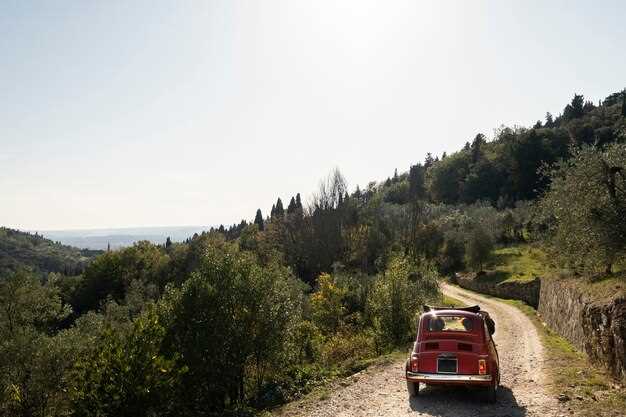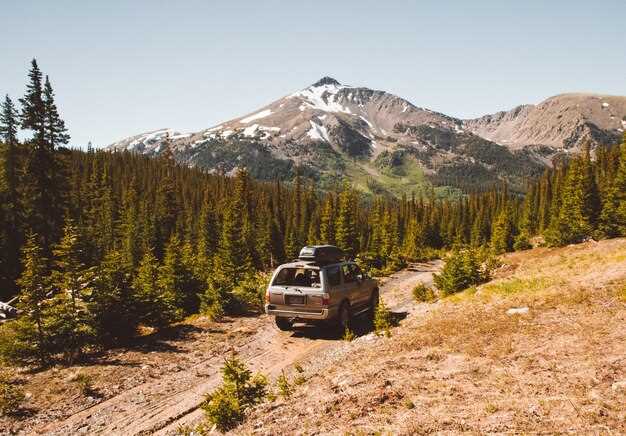
Exploring the rugged terrains of the United States offers an exhilarating adventure for truck enthusiasts. With diverse landscapes that range from rocky mountains to sandy deserts, there are numerous off-road trails that cater to various skill levels and vehicle capabilities. This guide will delve into some of the best off-road trails, providing a memorable experience for both seasoned adventurers and newcomers alike.
Off-roading is not just a hobby; it is a lifestyle that embodies freedom, exploration, and the thrill of conquering the wild. Each trail presents unique challenges, allowing drivers to test the limits of their trucks while immersing themselves in breathtaking scenery. From the iconic trails of Moab, Utah, to the scenic routes of the Pacific Northwest, each destination offers a distinctive journey filled with natural wonders.
Before embarking on an off-road adventure, it is crucial to choose the right trail that suits your truck’s capabilities and your driving experience. Whether you seek thrilling ascents, muddy bogs, or pristine forests, understanding what each trail has to offer will ensure a safe and enjoyable outing. Join us as we explore some of the top-rated off-road trails across the U.S. that promise excitement and unforgettable experiences for truck lovers.
Top Five Off-Road Trails in the Southwest Region

The Southwest region of the United States is renowned for its stunning landscapes and exhilarating off-road trails, making it a paradise for truck enthusiasts. Here are five of the best off-road trails to explore in this unique area.
1. Moab’s Fins and Things, Utah – This trail offers a mix of challenging rock formations and stunning vistas. As a beginner-friendly trail, it is perfect for those new to off-roading while still engaging enough for experienced drivers. The winding paths allow for beautiful views of the surrounding desert landscape, especially at sunset.
2. Sedona’s Broken Arrow Trail, Arizona – Known for its breathtaking red rock scenery, Broken Arrow is a must-visit for any off-road truck driver. The trail features steep climbs, technical obstacles, and stunning views of Sedona’s iconic rock formations. It is best suited for intermediate to advanced drivers, as some sections can be quite challenging.
3. Apache Trail, Arizona – This historic route offers a stunning mix of scenery, including mountains, canyons, and lakes. The Apache Trail is partially paved, with off-road sections that provide a thrilling experience for truck drivers. The trail features numerous lookout points, making it an excellent choice for scenic drives and photography opportunities.
4. Tombstone Canyon, Arizona – Located near the historic town of Tombstone, this trail provides a blend of history and adventure. The rocky terrain requires good driving skills and a sturdy truck. The trail offers an authentic off-roading experience with fascinating ghost towns and mining sites along the way.
5. Black Bear Pass, Colorado – Renowned for its steep grades and narrow roads, Black Bear Pass is an iconic off-road experience. This trail is recommended for experienced drivers due to its technical sections and breathtaking drop-offs. The scenery is unparalleled, with impressive mountain views and wildflower-covered meadows, providing a memorable outing for adventurous truck owners.
Essential Gear to Bring for Off-Road Adventures

When embarking on an off-road adventure, proper preparation is key to ensure safety, comfort, and enjoyment. Here is a list of essential gear that every off-roading enthusiast should consider bringing along:
-
Recovery Kit:
- Tow straps
- Winch
- Shackles
- Traction mats
- Air compressor
- Jack and jack stands
-
Navigation Tools:
- GPS device
- Topographic maps
- Compass
- Offline navigation apps
-
Tools and Maintenance Gear:
- Multi-tool or basic toolkit
- Tire repair kit
- Fluids (oil, coolant, etc.)
- Flashlight or headlamp with extra batteries
-
Safety Equipment:
- First aid kit
- Fire extinguisher
- Emergency blanket or bivvy sack
- Whistle
-
Camping Supplies:
- Tent or tarp
- Sleeping bags and mats
- Portable camping stove
- Cookware and utensils
- Food and water supplies
-
Clothing and Personal Gear:
- Durable, weather-appropriate clothing
- Sturdy hiking boots
- Hat and sunglasses
- Gloves (for driving or handling tools)
-
Communication Devices:
- Cell phone with portable charger
- Two-way radios
- Satellite phone (for remote areas)
Equipping your truck and yourself with these essential items can significantly enhance your off-road experience and help you tackle challenges that may arise on the trails.
Safety Tips for Driving Trucks on Rugged Terrain
When navigating off-road trails, it’s crucial to prioritize safety to ensure a smooth and enjoyable experience. Start by wearing appropriate safety gear, including a helmet if necessary, and always buckle up. Ensure that all passengers are seated and secured in the truck before moving.
Inspect your vehicle before heading out. Check tire pressure, fluid levels, and brakes, as well as the functionality of lights and signals. Proper maintenance reduces the risk of mechanical failures while traversing rough terrain.
Familiarize yourself with your truck’s capabilities. Understanding your vehicle’s limitations, such as approach and departure angles, ground clearance, and four-wheel drive functionality, will help you make better decisions on the trail.
Plan your route carefully. Research the terrain and trail conditions beforehand. Utilize maps, apps, or local guides to understand potential obstacles, weather changes, and emergency contacts.
Practice defensive driving on rugged terrain. Anticipate obstacles such as rocks, mud, or steep inclines, and maintain a safe speed that allows you to react effectively. Avoid sudden movements, as they can lead to loss of control.
Use appropriate driving techniques for off-road conditions. For steep inclines or declines, maintain a steady speed and avoid abrupt acceleration or braking. On slippery surfaces, reduce your speed and utilize lower gears to enhance traction.
Maintain a safe distance from other vehicles to avoid collisions on narrow or winding trails. Communicate with other drivers using hand signals or radios if necessary, especially in areas where visibility is limited.
Always carry essential safety equipment, such as a first aid kit, fire extinguisher, flashlight, and basic tools. Additionally, keep recovery gear accessible, including a winch, tow straps, and a shovel.
Stay hydrated and take breaks to prevent fatigue. This ensures that you remain alert and capable of making quick, sound decisions while driving.
Lastly, inform someone about your trip plan, including your expected return time. This precaution is crucial in case of emergencies, allowing others to act quickly if you encounter difficulties.



